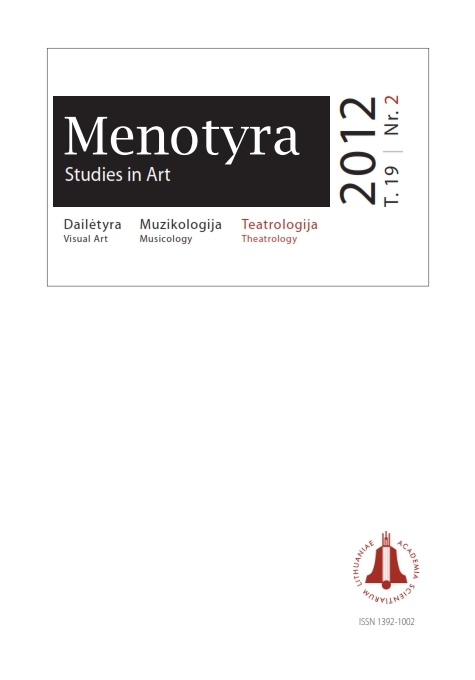Teatrinės komunikacijos kontūrai
Frames of theatrical communication
Author(s): Dovilė ZavedskaitėSubject(s): Theatre, Dance, Performing Arts, Fine Arts / Performing Arts
Published by: Lietuvos mokslų akademijos leidykla
Keywords: code; performance; theatrical communication; theatrical sign; text; spectator
Summary/Abstract: This article presents a model of theatrical communication formed by an American theatre semiotician Keir Elam, in which one of the main characteristics of theatrical communication properties - its complexity - is emphasized. The decomposition of the model, involving outer (theatrical) and inner (dramatic) communication, into semantic segments allows defining the influence of each component on the process of theatrical communication.The abundance of performance creators is the primary factor of multi-layer theatrical reality, where a particular contribution of everyone becomes an integral part of the final result. A dramatic segment challenging the creation of a performance, named by Elam as a dramatic context, in this case is considered to be only a counterfort for the completeness of the performance: an intention of a spectator to go to the theatre is initiated not only by dramatic information, but mainly by a signified level of information. The density of signs of the theatrical discourse defined by the school of semiotics indicates the communicative space of the performance – the spectators’ ability to recognize / conceive signs and their systems determines the verification of the communicative process. A spectator is considered to be a subject determining the final meaning of the performance: namely a spectator ensures joining a variety of different messages into an integral text.The model of theatrical communication by Keir Elam, reflecting the complexity of the theatre, serves as a thorough multiple guideline which permits to evaluate a performance as one of the richest forms of communication balancing between multipersonal theatre creators and creative spectators (desirably) becoming their co-authors.
Journal: Menotyra
- Issue Year: 19/2012
- Issue No: 2
- Page Range: 149-156
- Page Count: 8
- Language: Lithuanian

